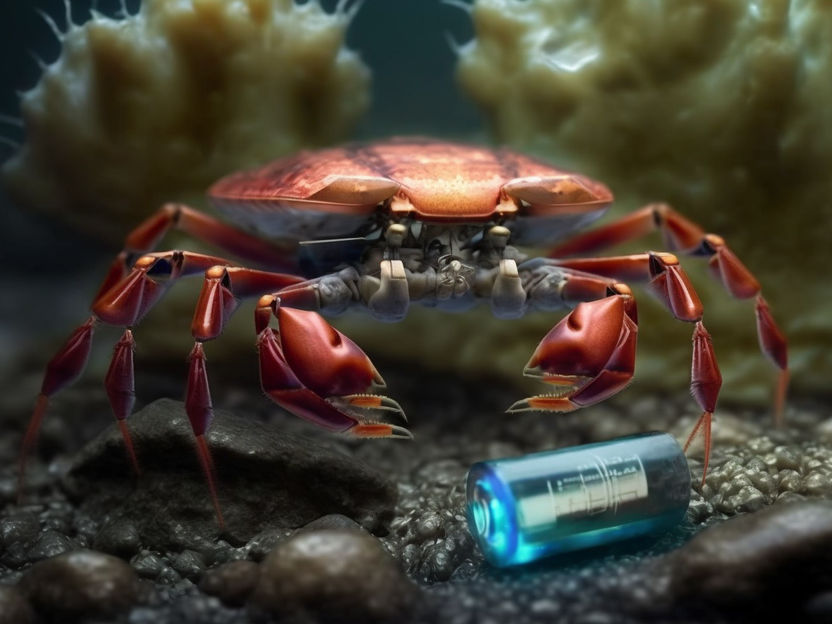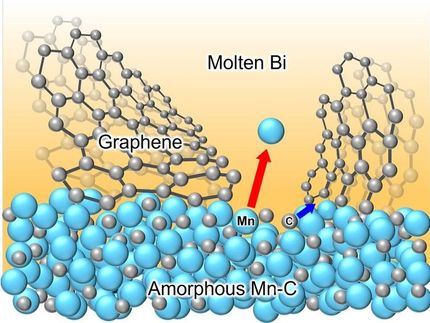Crab shells could help power the next generation of rechargeable batteries
This work could help develop more sustainable battery technologies
Anybody who has ever enjoyed fresh crab legs or lobster tails can attest to how difficult it is to get through their tough shells. But instead of just throwing them away, researchers are “upcycling” these shells into porous, carbon-filled materials with a wide variety of uses. Now, a team reporting in ACS Omega has used this “crab carbon” to create anode materials for sodium-ion batteries — an up-and-coming competitor to lithium-ion chemistries.

Crab shells could be “upcycled” to help make new battery materials (symbolic image).
Computer-generated image
Lithium-ion batteries have become ubiquitous in recent years, powering phones, cars and even toothbrushes. But because the amount of lithium metal in the world is limited, some researchers have turned their attentions to its “chemical cousins” instead. Previously, researchers created a biodegradable zinc-ion battery using the chitin in crab shells. But these wastes could alternatively be turned into “hard carbon,” a material that has been explored as a possible anode for sodium-ion batteries. Though chemically similar to lithium, sodium ions are larger, and thus incompatible with a lithium-ion battery’s anode, which is typically made of graphite. When hard carbon is combined with metallic semiconductor materials, such as the transition metal dichalcogenides (TMDs), the material can become a feasible battery anode. So, Yun Chen, Yue Zhao, Hongbin Liu and Tingli Ma wanted to explore how two different TMDs — tin sulfide and iron sulfide — could be combined with hard carbon made from crab shells to make a viable sodium-ion battery anode.
To make their “crab carbon,” the researchers heated crab shells to temperatures exceeding 1000 F. They then added the carbon to a solution of either tin sulfide (SnS2) or iron sulfide (FeS2), then dried them to form anodes. The porous, fibrous structure of the crab carbon provided a large surface area, which enhanced the material’s conductivity and ability to transport ions efficiently. When tested in a model battery, the team found that both composites had good capacities and could last for at least 200 cycles. The researchers say that this work could provide a route to upcycle other wastes and help develop more sustainable battery technologies.
Original publication
Other news from the department science
Most read news
More news from our other portals
See the theme worlds for related content
Topic World Battery Technology
The topic world Battery Technology combines relevant knowledge in a unique way. Here you will find everything about suppliers and their products, webinars, white papers, catalogs and brochures.

Topic World Battery Technology
The topic world Battery Technology combines relevant knowledge in a unique way. Here you will find everything about suppliers and their products, webinars, white papers, catalogs and brochures.




























































